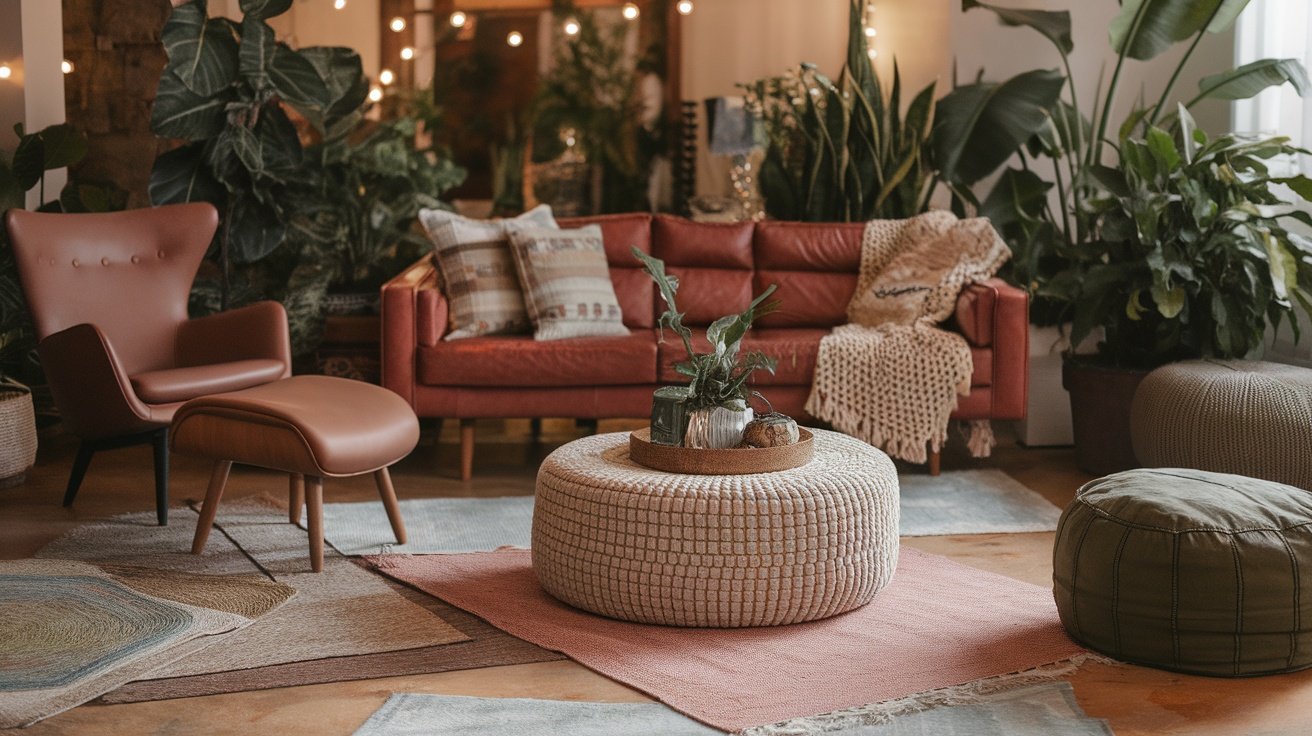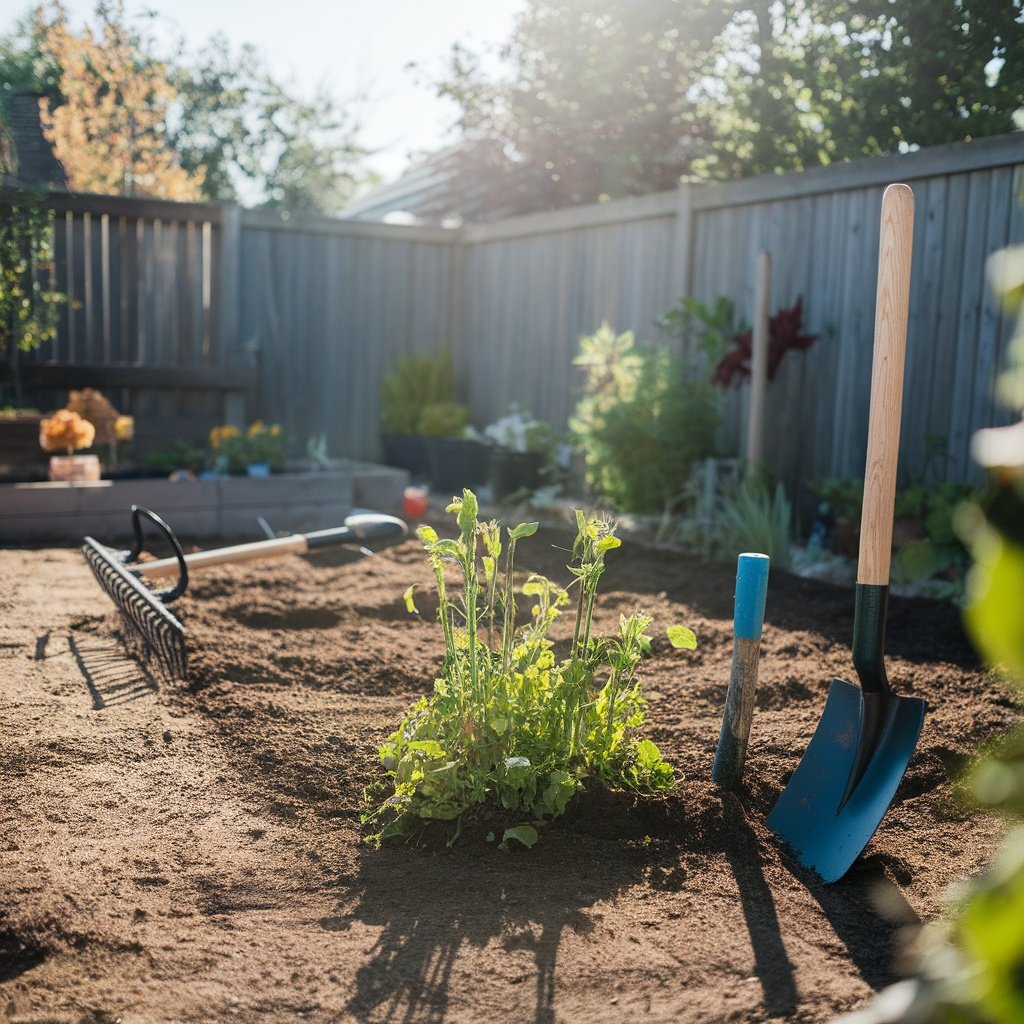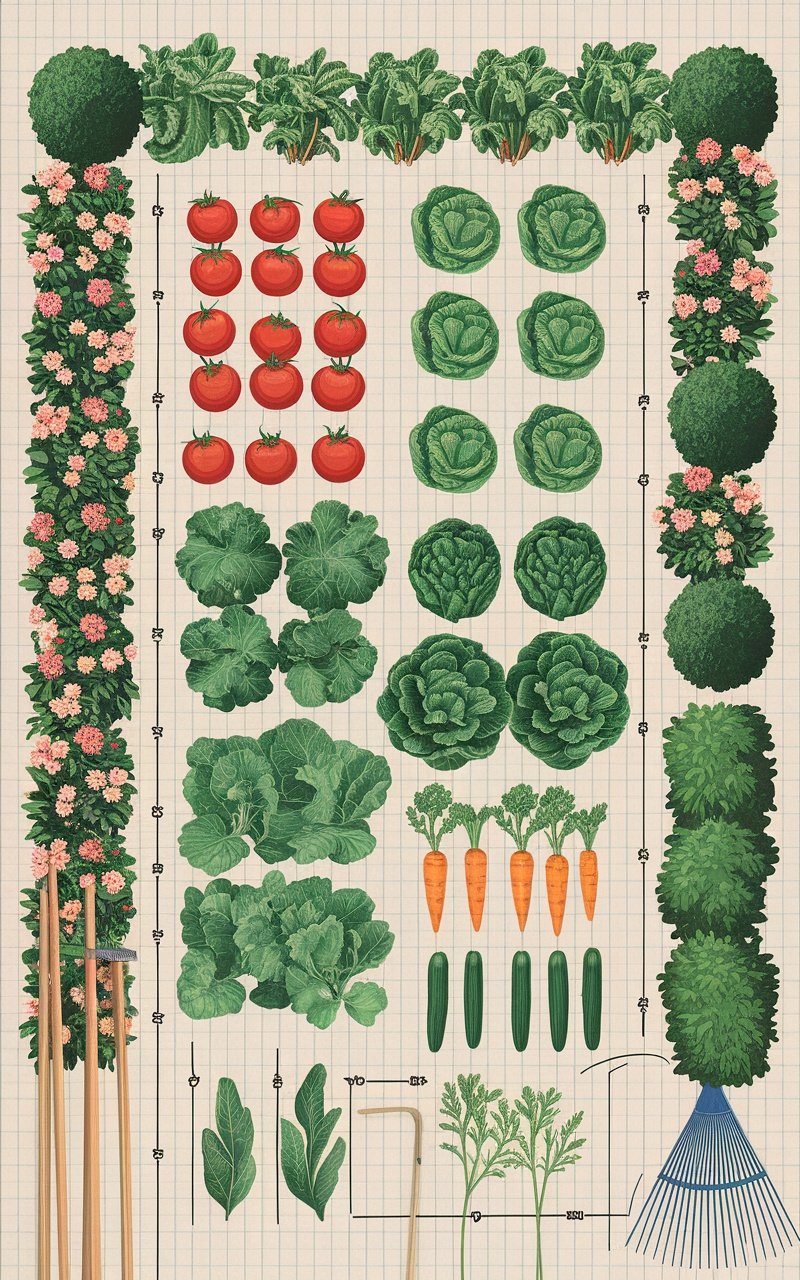Planning your first garden can be a fun and rewarding experience, and it doesn’t have to be complicated. With a little planning, you can create a space that reflects your style and meets your needs. Let’s break down the steps to get your hands dirty and sow the seeds of your gardening success.
Selecting Easy-to-Grow Plants
When starting your garden, it’s wise to choose plants that are known for being easy to grow. The image shows a vibrant garden filled with a mix of colorful flowers and vegetables. This combination is not only visually appealing but also practical for beginners.
Look at the lush basil, bright marigolds, and ripe tomatoes. Basil is a fantastic choice for new gardeners. It grows quickly and thrives in most conditions. Plus, you can use it in many dishes!
Marigolds add a pop of color and help deter pests, making them a great companion plant. Having flowers like these in your garden can attract pollinators, too, which is beneficial for your vegetables.
Tomatoes are another favorite for first-time gardeners. They are rewarding to grow and can produce a bountiful harvest. Just ensure they receive plenty of sunlight and water.
Incorporating a mix of herbs and flowers can make your garden lively and functional. Remember, the key is to start small and enjoy the process!
Choosing the Right Location for Your Garden
Picking the perfect spot for your garden sets the stage for success. Look for an area that gets plenty of sunlight. Most plants thrive with at least six to eight hours of direct sunlight each day.
Check the soil quality, too. The image shows a well-prepared garden bed with tools nearby. You want soil that drains well and is rich in nutrients. If your soil isn’t the best, don’t worry! You can always improve it with compost or fertilizers.
It’s also smart to think about accessibility. You want to be able to reach your garden easily for watering and harvesting. A visible spot in your yard can remind you to tend to your plants regularly. Just like the image suggests, make it inviting!
Lastly, consider any nearby plants or trees. They can cast unwanted shade over your garden. Make sure your growing space is free from any obstacles that could hinder growth. Happy gardening!
Creating a Simple Garden Layout
Planning your first garden doesn’t have to be overwhelming. A simple layout can make the process enjoyable. The image above shows a hand-drawn garden plan filled with various plants and flowers. You can see clusters of colorful blooms, tall sunflowers, and even a cactus. Each element adds a unique touch to the overall design.
Start by sketching out your space. Keep it simple. Use graph paper or a drawing app to lay out where you want your plants. Think about the sun and shade in your yard. Some plants thrive in direct sunlight, while others prefer a bit of shade.
In the sketch, you can notice how different plant sizes are organized. Taller plants like sunflowers are placed towards the back, while shorter plants are in front. This layering creates depth and makes your garden visually appealing. Mixing different types of plants, like flowers and herbs, adds variety and interest.
Also, think about the colors you want to include. Bright flowers can create a cheerful vibe, while greens and earth tones offer a calming feel. The key is to choose plants that you love and will enjoy caring for.
Don’t forget to leave space for pathways or stepping stones if needed. This allows for easy access to your plants. A well-planned layout can turn your gardening experience into a rewarding project!



